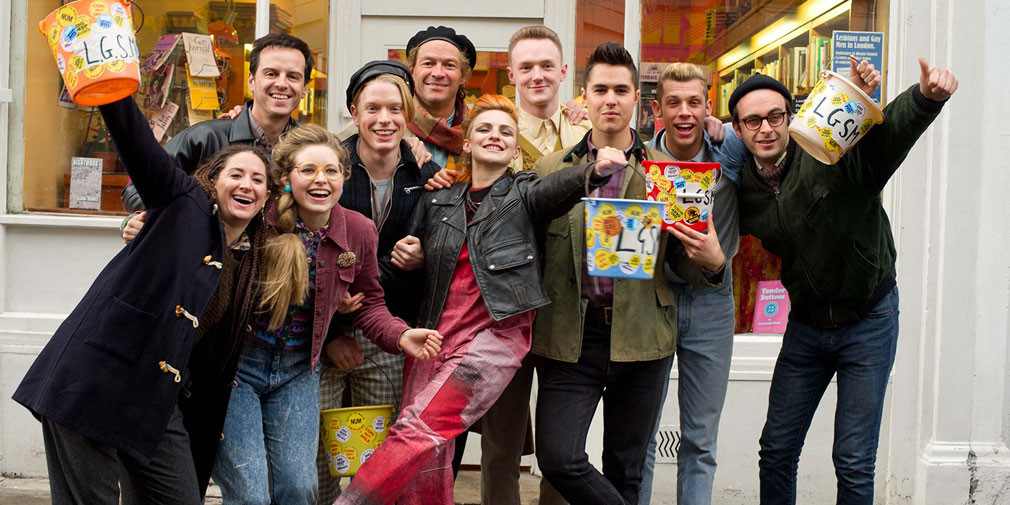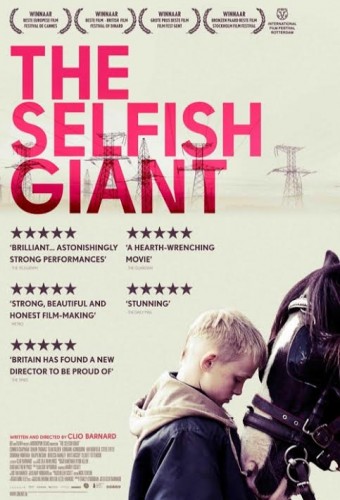The end of the year, just in time to qualify for the Oscars, is when we usually get at least a few films that feature actors we first saw when they were young and beautiful (or in the case of a performer like Bill Murray, not so beautiful) who, now that they’re around retirement age, are playing either irascible old coots (and their gender-switched twins: old ladies who swear a lot) or characters who show that life invariably becomes pathetic and tragic for those who age, as the leads in Michael Haneke’s Amour did a few years back. You’d never know from these films that some of the most powerful men in the mainstream movie industry are approaching or are over 70 (women in the business apparently are not allowed to be that age and keep their jobs)–and they aren’t shitting their pants nor have their personalities magically changed into the curmudgeonly but loveable stereotypes their own films are littered with.
Out writer-director Andrew Haigh best known for the film Weekend and as the co-creator of the now-cancelled HBO series Looking has decades before he turns 70, but in his new film 45 Years (opening Dec. 23) which he adapted from a short story by David Constantine, he treats the older, straight, married couple who are the film’s focus with the complexity that other filmmakers reserve for characters under 50. Charlotte Rampling plays Kate, a retired schoolteacher living in a home in rural England with her husband. Confident and warm but with razor sharp cheekbones, she wears boots and jeans for her daily morning’s walk with the dog as if she just stepped out of a Land’s End catalog, senior division.
When we first meet her, Kate seems, like a lot of older women, serene in the knowledge that she’s at least a little too good for her unshaven, bumbling husband, Geoff (Tom Courtenay) who may or may not have the early symptoms of dementia. She’s the one who knows where to find the German dictionary in their house when he needs one and corrects him when he gets the facts of an old news item wrong. But she doesn’t seem to resent her role as the competent, dependable spouse and brings a lot of tenderness to her interactions with Geoff, holding his hand or bringing him tea when he’s upset and preparing every meal and cleaning up afterward without complaint. I always notice, in films as in life, when women are the ones doing all the cooking and dish washing and 45 Years is one of the few films–and one of the only ones directed by a man–which seemed to notice along with me.
Kate is also the one who plans their social calendar, including the big party in a rented hall for their 45th wedding anniversary, delayed from the one they planned for their 40th when Geoff had open heart surgery. She’s even sure of the songs that should be played, politely insisting, “No Elton John”
The use of music in this film is some of the best I’ve ever heard–without any of the selections being obscure or surprising. These songs are precisely the ones that would play on an older person’s car radio and for their anniversary party and we’ve heard them many times before, but in this film, especially in the song that plays over the closing credits, we hear them in a new way, just as Kate comes to see her marriage with a new perspective. The other touches in the film are equally expert, from the cinematography of Lol Crawley to a supporting performance by Geraldine James as the couple’s (especially Kate’s) longtime friend.
So many other films (like the the execrable Youth) can’t show older characters without making cheap jokes about their bodies and diminished capacities. Even when we see this couple getting ready for bed and sex the two are never held up for ridicule, though Geoff , slowly pounding around the scar on his bare chest, like a superannuated Tarzan, seems to be making fun of himself. The film is about Rampling’s Kate but it wouldn’t work if Geoff were not equally well-written and Courtenay weren’t such a good foil. His Geoff is not above flattering Kate or playing the fool to appease her suspicions. In an early scene he defuses what in a shorter marriage might have turned into an argument with a wide-eyed admission, “I don’t remember.”
Seeing an older woman in crisis in a film without also seeing her humiliated (or looking very disheveled) is unusual. And we’re affected more by the increasing uncertainty Kate feels because of the calm we’ve seen her radiate in the early scenes. Haigh never robs Kate of her dignity, even during her dinner table confrontation with Geoff, “I’d like to be able to tell you everything I’m thinking,” she says, “but I can’t.”
Haigh does what more filmmakers should do with older performers: incorporate our own memories of them as younger actors into their characters, the way we see in older relatives and friends the traces of their younger selves. Sarah Polley proved she understood this desire when at the beginning of Away From Her (the first film she directed) she showed the woman who will be played by Julie Christie when she was in her twenties–and the young actress had a ’60s hairstyle Julie Christie might have worn and had the young Christie’s energetic and playful presence. Haigh pointedly avoids showing us what Rampling and Courtenay’s characters looked like when they were younger because we (at least those of us who watch British movies) already know–from the films the actors made in the era their characters discuss. The early ’60s which Geoff relives when he gets a reminder of a tragedy that happened then, is also when Courtenay starred in The Loneliness of the Long Distance Runner. The mid-sixties, when Geoff and Kate first met at a dance, was when Rampling made her film debut in Georgy Girl opposite the equally young Alan Bates and Lynn Redgrave.
Many films have characters who are a little (or a lot!) slow on the uptake, so that the audience can congratulate themselves on how much smarter they are than the people onscreen. Several times during 45 Years we assume Rampling’s Kate is overreacting, but as the movie continues, we understand that a woman married to a man for 45 years knows him better than we do. She questions him and knows what to ask when she feels like he could be hiding something from her. Sometimes Kate second-guesses Geoff so accurately that her intuition seems supernatural, until we realize we are just seeing the result of a very long relationship. And unlike the dreary, hackneyed revelations of By the Sea, what Kate finds out shocks us as much as it does her: it isn’t something Geoff could have “forgotten” to tell her.
When (not if) Rampling is nominated for awards for playing Kate, she’ll be called a “sentimental favorite” but her performance, like the relationship at the film’s center is a culmination of experience. Rampling was a fixture of “swinging ’60s” London who hung out with The Rolling Stones and Jimi Hendrix. Over the course of her long career, she’s worked with an astonishing list of talents: Visconti and Ozon were her directors and she was the leading lady opposite both Paul Newman and Robert Mitchum. The last look and gesture she leaves us with in 45 Years is the unmistakable answer to a question we’ve been asking ourselves throughout the last scenes of the film. If she wins awards for this role, it will be because she’s earned them, not because she’s outlasted her peers.
[youtube_sc url=”https://www.youtube.com/watch?v=qXAnjA9tAnQ” iv_load_policy=”3″]
___________________________________________________
Ren Jender is a queer writer-performer/producer putting a film together. Her writing, besides appearing every week on Bitch Flicks, has also been published in The Toast, RH Reality Check, xoJane and the Feminist Wire. You can follow her on Twitter @renjender
















